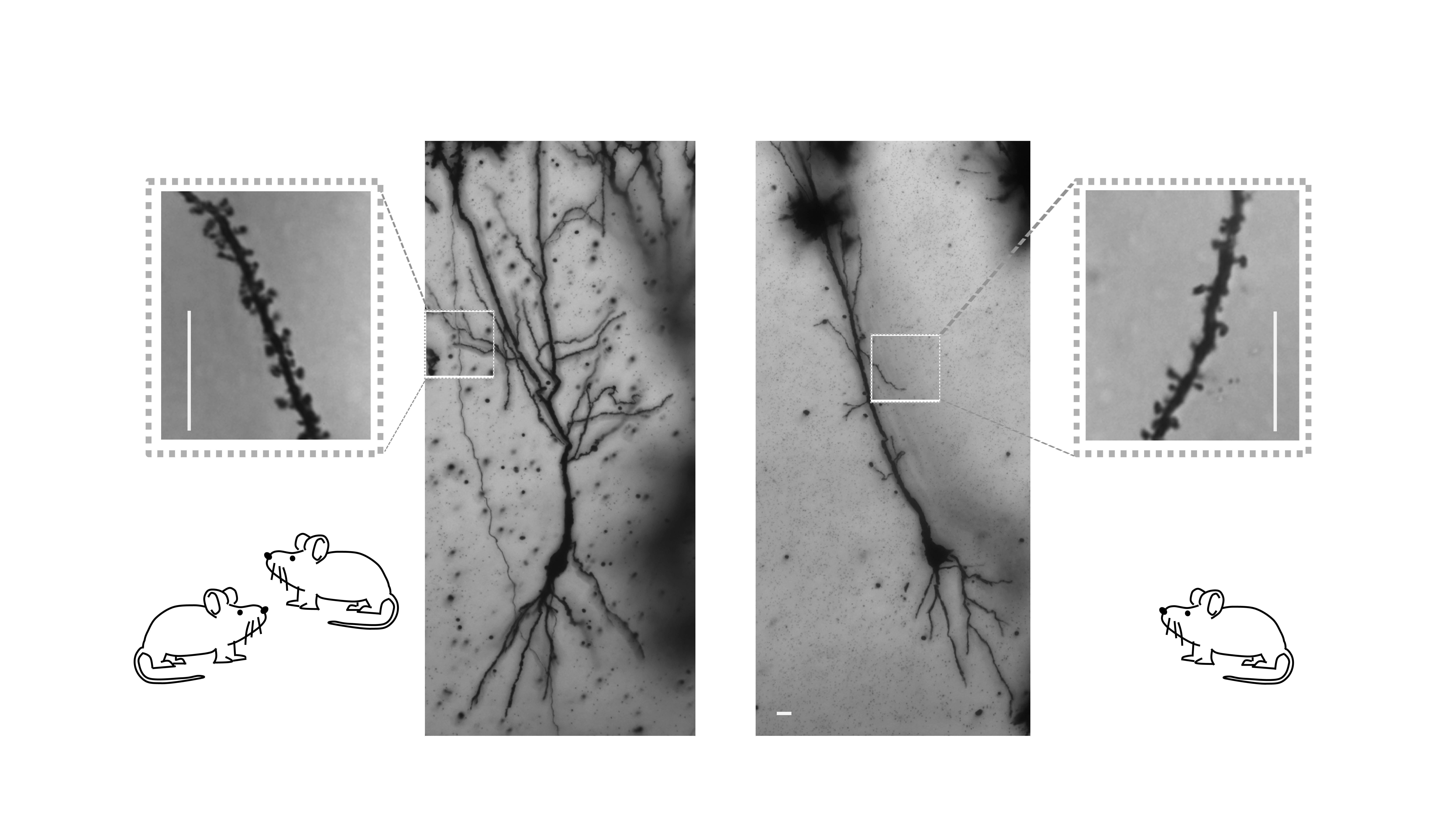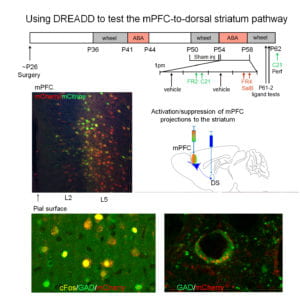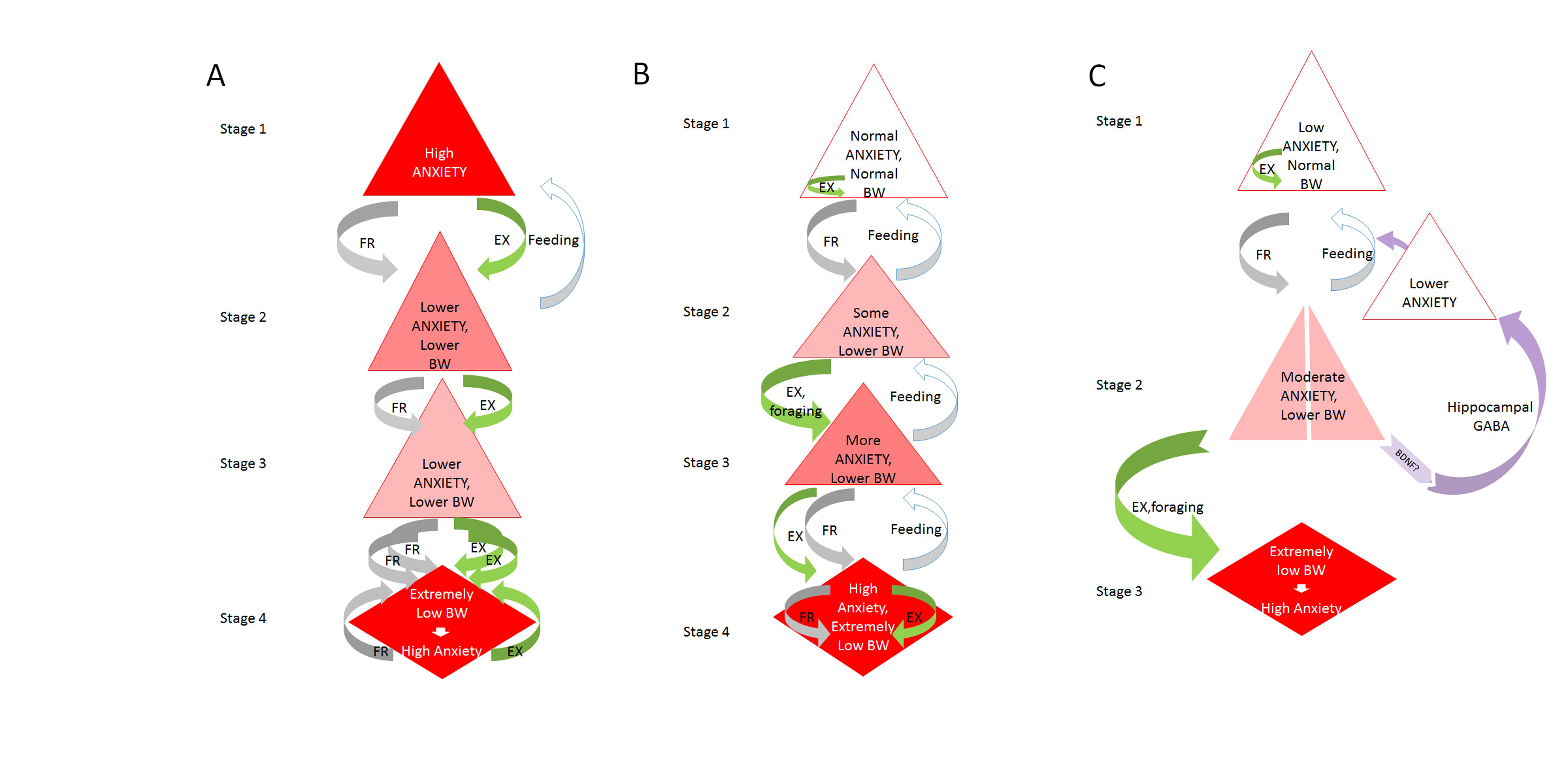We are investigating whether ketamine and ketogenic diet ameliorate anorexia’s maladaptive behavior, using a mouse model of anorexia nervosa. The maladaptive behaviors we measure are hunger-evoked over-exercise, voluntary food restriction (animals choose to run rather than eat, even when hungry) and rapid weight loss. See the annual report for the most recent findings. So far, we’ve learned that ketamine’s efficacy is age-dependent (more efficacious during mid-adolescence than in adulthood) and that the ameliorative effect is sustained for multiple weeks after injections. Ketogenic diet is more efficacious than ketamine, but when the mouse goes off of the ketogenic diet, the protective effect wanes. Our next trials are to combine ketogenic diet with ketamine, to find out whether this combination will yield a more potent AND long-lasting beneficial effect, and how these two treatments yield reduction of the maladaptive behavior accompanying anorexia nervosa. We are hopeful.
We are using DREADDs to interrogate the role of specific brain pathways in the maladaptive behaviors elicited in activity-based anorexia. So far, the pathways we have investigated are those originating in prefrontal cortex and projecting to dorsal striatum and those originating in prefrontal cortex and projecting to dorsal raphe.
We are investigating the mechanism by which some animals gain resilience to the stressful environment of food restriction. Hunger evokes foraging but some animals learn to suppress their innate tendency to run excessively when they lose weight due to food restriction. The changes found so far involve increase of GABA receptors in the hippocampus and increased GABAergic innervation of the hippocampus.
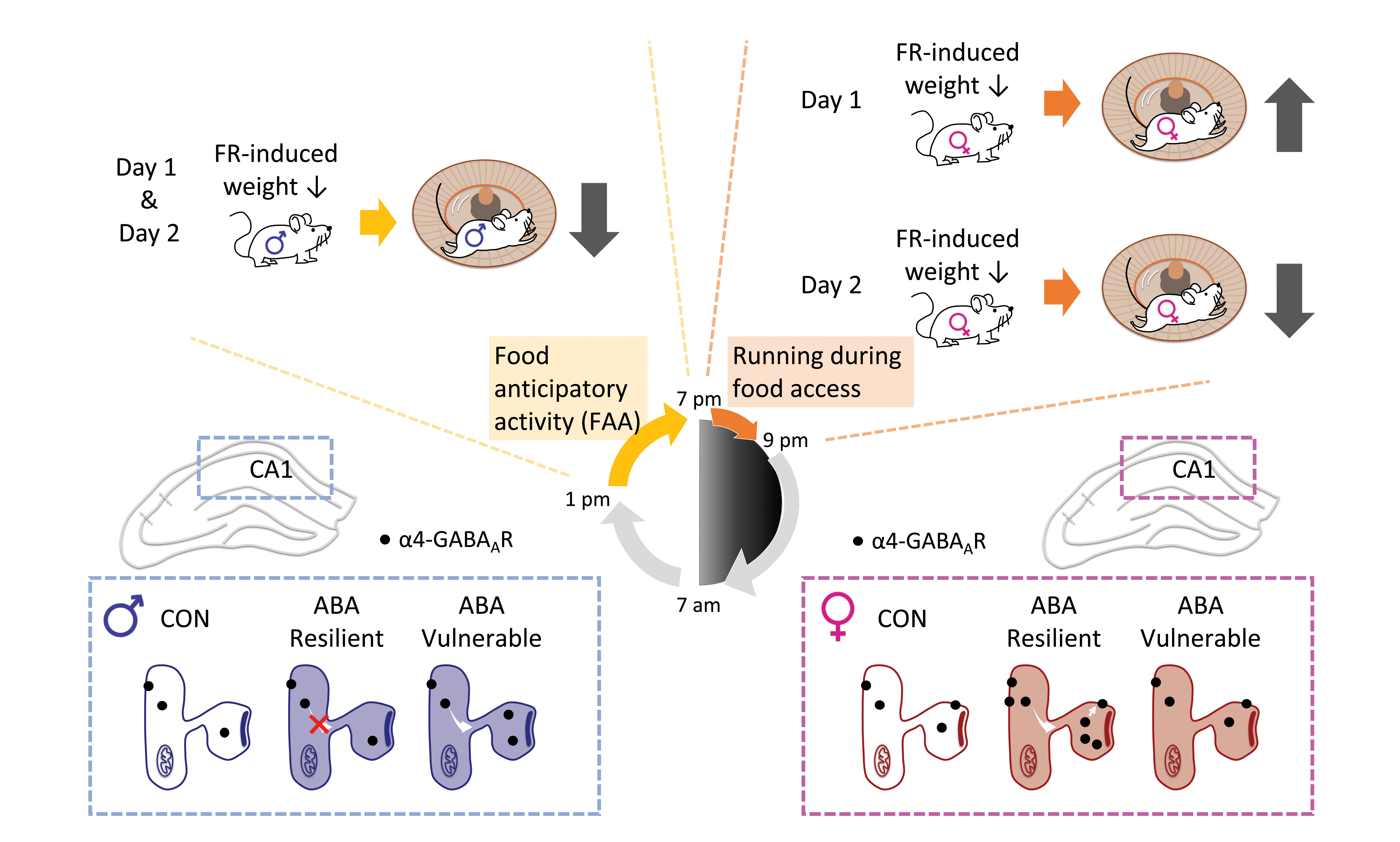
Chen, Y.-W., Actor-Engel, H., & Aoki, C. (2018). ⍺4-GABAA receptors of hippocampal pyramidal neurons are associated with resilience against activity-based anorexia for adolescent female mice but not for males. Molecular and Cellular Neuroscience. doi:10.1016/j.mcn.2018.04.008
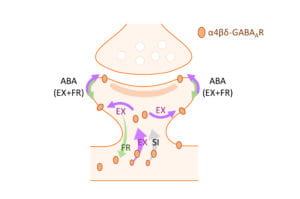 Aoki, C., Chen, Y.-W., Chowdhury, T.G., Piper, W. (2017) α4βδ-GABAA receptors in dorsal hippocampal CA1 of adolescent female rats traffic to the plasma membrane of dendritic spines following voluntary exercise and contribute to protection of animals from activity-based anorexia through localization at excitatory synapses. Journal of Neuroscience Research. doi
Aoki, C., Chen, Y.-W., Chowdhury, T.G., Piper, W. (2017) α4βδ-GABAA receptors in dorsal hippocampal CA1 of adolescent female rats traffic to the plasma membrane of dendritic spines following voluntary exercise and contribute to protection of animals from activity-based anorexia through localization at excitatory synapses. Journal of Neuroscience Research. doi
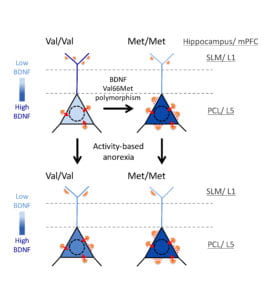
Chen, Y.-W., Surgent, O., Rana, B. S., Lee, F., & Aoki, C. (2016). Variant BDNF-Val66Met Polymorphism is Associated with Layer-Specific Alterations in GABAergic Innervation of Pyramidal Neurons, Elevated Anxiety and Reduced Vulnerability of Adolescent Male Mice to Activity-Based Anorexia. Cerebral Cortex. doi: 10.1093/cercor/bhw210
Chen, Y.-W., Wable, G. S., Chowdhury, T. G., & Aoki, C. (2016). Enlargement of Axo-Somatic Contacts Formed by GAD-Immunoreactive Axon Terminals onto Layer V Pyramidal Neurons in the Medial Prefrontal Cortex of Adolescent Female Mice Is Associated with Suppression of Food Restriction-Evoked Hyperactivity and Resilience to Activity-Based Anorexia. Cerebral Cortex. doi: 10.1093/cercor/bhv087
Glutamatergic synapses also undergo alterations as a consequence of activity-based anorexia, the animal model of anorexia nervosa.
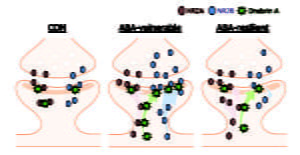
Chen, Y.-W., Actor-Engel, H., Sherpa, A. D., Klingensmith., L., Chowdhury, T.G., & Aoki, C. NR2A- and NR2B-NMDA receptors and drebrin within postsynaptic spines of the hippocampus correlate with hunger-evoked exercise. (2016) Brain Structure and Function. doi: 10.1007/s00429-016-1341-7.
 Aoki, C., Chowdhury, T. G., Wable, G. S., Chen, Y.-W. (2016). Synaptic changes in the hippocampus of adolescent female rodents associated with resilience to anxiety and suppression of food restriction-evoked hyperactivity in an animal model for anorexia nervosa. Brain Research. doi: 10.1016/j.brainres.2016.01.019
Aoki, C., Chowdhury, T. G., Wable, G. S., Chen, Y.-W. (2016). Synaptic changes in the hippocampus of adolescent female rodents associated with resilience to anxiety and suppression of food restriction-evoked hyperactivity in an animal model for anorexia nervosa. Brain Research. doi: 10.1016/j.brainres.2016.01.019
We are also investigating the impact of isolated living during adolescence. It IS impactful. Dendritic branching and spine density becomes less, after three days of living in isolation.
Chen, Y.-W., Akad, A., Aderogba, R., Chowdhury, T.G., & Aoki, C. (2018). Dendrites of the dorsal and ventral hippocampal CA1 pyramidal neurons of singly housed female rats exhibit lamina-specific growths and retractions during adolescence that are responsive to pair housing. Synapse.
e22034.doi:10.1002/syn.22034.
